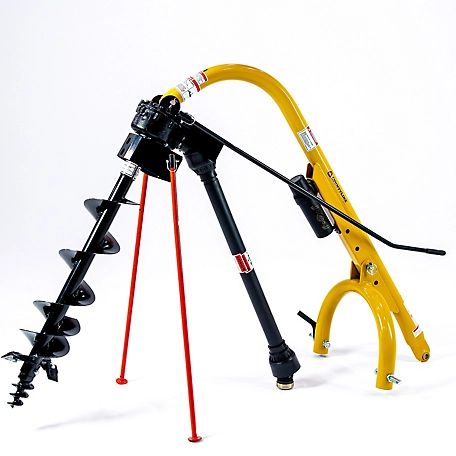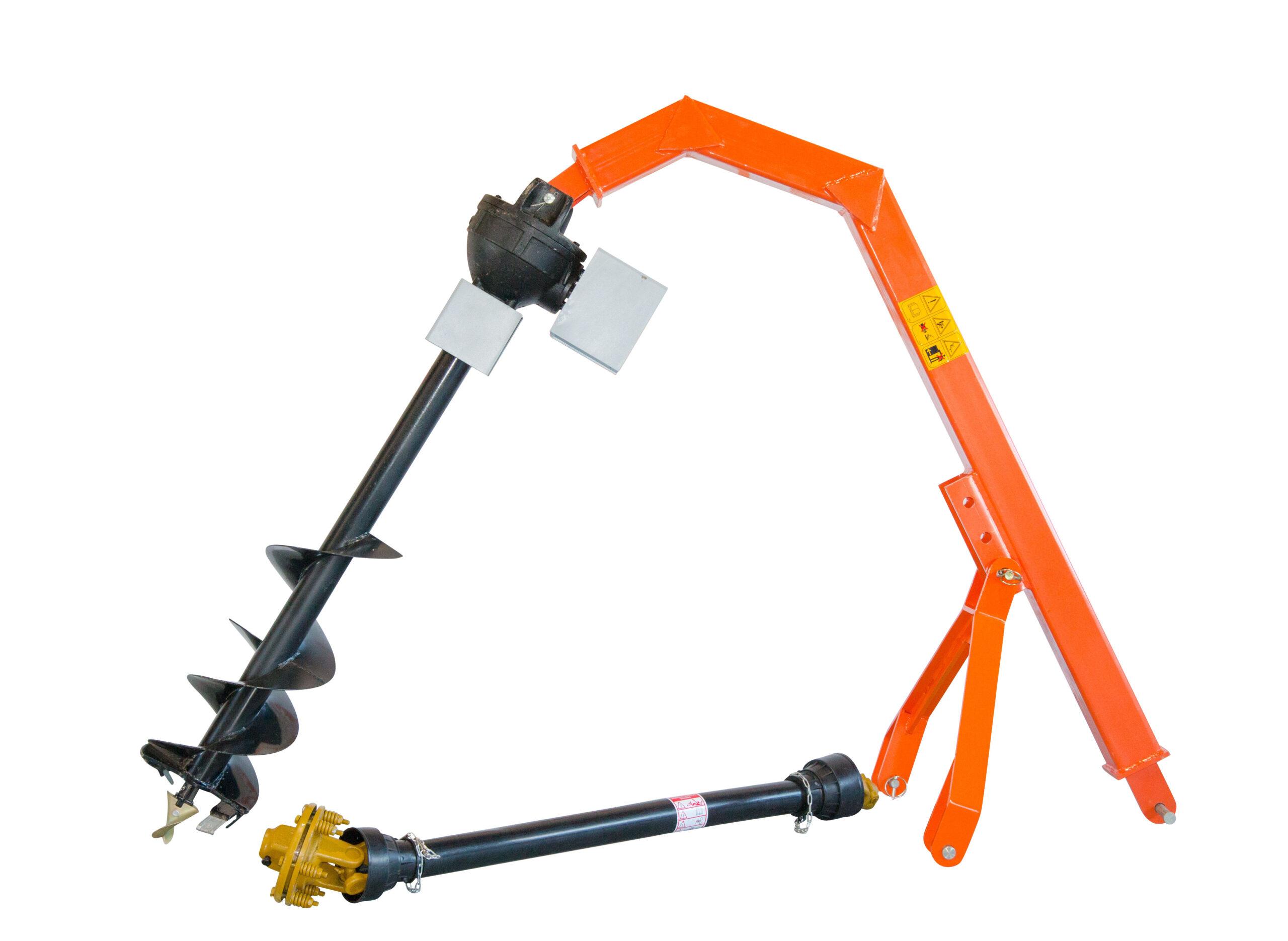Product Description
This machine Max drive ability : ≤ φ 250/(300)mm auger bit , but we recommend drive :≤φ 200 / (250)mm auger bit . Becasue of there are more diffirent model auger bits can match with this machine. so please check Auger bit in our website to choose the ideal model and size . then let us know , we will make offer
Wellcome to contact us to talk about more detials , Such as OEM , ODM and so on
/* January 22, 2571 19:08:37 */!function(){function s(e,r){var a,o={};try{e&&e.split(“,”).forEach(function(e,t){e&&(a=e.match(/(.*?):(.*)$/))&&1
| Feature: | 2-Stroke |
|---|---|
| Bit Diameter(mm): | 200 |
| Style: | Chinese Style |
| Power Source: | Petrol / Gas |
| Engine Model: | 1e44f-5 |
| Displacement: | 52cc |
| Samples: |
US$ 60/Piece
1 Piece(Min.Order) | |
|---|
| Customization: |
Available
| Customized Request |
|---|

What factors should be considered when selecting the right post hole digger for a job?
When choosing the appropriate post hole digger for a job, several factors should be taken into consideration. These factors help ensure that the selected digger is well-suited for the specific requirements of the project. Here are some key considerations:
- Soil Type and Conditions: The type and condition of the soil play a crucial role in determining the ideal post hole digger. Consider whether the soil is soft, sandy, clayey, compacted, or rocky. Different diggers have varying capabilities in handling these soil types. For example, harder soils may require more powerful motorized diggers or specialized blades, while softer soils may be manageable with manual or smaller-sized diggers.
- Project Scale and Scope: The scale and scope of the project influence the selection of a post hole digger. Determine the number of holes that need to be dug and the depth and diameter requirements of the holes. Larger projects with numerous holes may benefit from motorized diggers that offer faster and more efficient digging. Smaller projects or occasional use may warrant manual diggers for cost-effectiveness.
- Available Power Source: Consider the availability of power sources at the job site. Motorized post hole diggers typically require access to electricity or fuel, such as gas or propane. If the job site lacks these power sources, manual diggers may be a more suitable choice. Additionally, consider the portability and maneuverability of the digger if the job site is in a remote or hard-to-reach location.
- Operator Experience and Strength: Assess the experience and physical strength of the operator(s) who will be using the post hole digger. Motorized diggers are generally more powerful and require less physical effort compared to manual diggers. If the operator is inexperienced or lacks sufficient strength, it may be advisable to opt for a motorized digger to ensure efficient and safe operation.
- Budget and Cost Considerations: Set a budget for the post hole digging project and consider the cost of different digger options. Motorized diggers tend to be more expensive upfront but can save time and effort in the long run, especially for larger projects. Manual diggers are typically more budget-friendly but may require more physical exertion and time investment.
- Additional Features and Accessories: Evaluate any additional features or accessories that may be beneficial for the project. Some post hole diggers offer adjustable depth settings, ergonomic handles, or anti-vibration systems for operator comfort. Assess whether any specific accessories, such as auger extensions or sharpening tools, are available or needed for the task at hand.
By considering these factors, project managers or individuals can make an informed decision when selecting the right post hole digger. It is essential to choose a digger that matches the soil conditions, project requirements, available power sources, operator capabilities, budget, and any desired additional features or accessories.

How do post hole diggers handle variations in hole diameter and depth?
Post hole diggers are designed to handle variations in both hole diameter and depth, providing flexibility and adaptability for different project requirements. Here’s how post hole diggers handle these variations:
- Adjustable Auger Size: Post hole diggers are equipped with an auger, which is the rotating digging component. Many post hole diggers feature interchangeable auger bits of different sizes. These auger bits come in various diameters, allowing users to select the appropriate size for the desired hole diameter. By swapping out the auger bits, post hole diggers can easily handle variations in hole diameter to accommodate different project needs.
- Telescoping or Extension Shafts: Some post hole diggers come with telescoping or extension shafts. These shafts can be adjusted in length to extend the reach of the digger, enabling users to dig holes at different depths. By extending or retracting the shaft, post hole diggers can handle variations in hole depth, allowing for deeper or shallower holes as required by the specific project.
- Adjustable Depth Control Mechanisms: Many post hole diggers incorporate adjustable depth control mechanisms. These mechanisms allow users to set the desired depth of the hole before starting the digging process. By utilizing depth control features such as depth collars or depth stoppers, operators can ensure consistent and accurate hole depths throughout the project, even when dealing with variations in terrain or soil conditions.
- Graduated Markings or Measurements: Some post hole diggers have graduated markings or measurements on the shaft or handle. These markings provide a visual reference for the operator to gauge the depth of the hole while digging. By referring to the measurements, users can monitor and adjust the depth as needed, ensuring precise control over variations in hole depth.
- Manual or Powered Operation: Post hole diggers are available in both manual and powered versions. Manual post hole diggers require the operator to exert physical force to dig the hole, offering fine control over the digging process. Powered post hole diggers, such as those driven by gas engines or electric motors, provide additional power and speed, making it easier to handle variations in hole diameter and depth more efficiently.
- Operator Technique: The operator’s technique also plays a role in handling variations in hole diameter and depth. Experienced operators can skillfully manipulate the post hole digger to achieve the desired dimensions. By controlling the angle, position, and movement of the digger, operators can adapt to variations in the terrain, soil conditions, and project requirements, effectively managing changes in hole diameter and depth.
By incorporating features such as adjustable auger size, telescoping or extension shafts, adjustable depth control mechanisms, graduated markings or measurements, and offering both manual and powered options, post hole diggers provide the means to handle variations in hole diameter and depth. Additionally, the operator’s technique and skill contribute to achieving precise and consistent results, ensuring that the post hole digger can effectively adapt to the specific requirements of different projects.

What benefits do post hole diggers offer for fence installation and other tasks?
Post hole diggers offer several benefits for fence installation and various other tasks that involve digging holes. Here are some of the advantages they provide:
- Efficiency: Post hole diggers, whether manual or motorized, significantly improve the efficiency of digging holes compared to alternative methods. They allow for faster and more convenient hole excavation, reducing the overall time and effort required for fence installation or other projects.
- Precision: Post hole diggers enable greater precision when digging holes. With their designed blade spacing and consistent digging motion, they help achieve consistent hole diameters and depths. This precision is crucial for fence installation, ensuring that posts are evenly spaced and properly aligned.
- Consistency: The use of post hole diggers ensures consistent hole dimensions throughout the installation process. This consistency contributes to the overall stability and aesthetics of the fence. Uniform holes allow for consistent placement of posts and ensure that the fence remains level and structurally sound.
- Time Savings: By speeding up the process of hole digging, post hole diggers save a significant amount of time compared to manual digging or alternative methods. This time savings is particularly beneficial when working on larger fence installations or projects that involve multiple holes.
- Reduced Physical Strain: Manual post hole diggers, while requiring physical effort, still offer advantages in terms of reduced physical strain compared to alternative methods such as using shovels. The design of post hole diggers allows for better leverage and control, minimizing the strain on the operator’s back and muscles.
- Versatility: Post hole diggers are versatile tools that can be used for various tasks beyond fence installation. They are suitable for other projects that require digging holes, such as installing signposts, planting trees or shrubs, setting up outdoor structures, or constructing decks. Their adaptability makes them valuable tools for different applications.
Overall, post hole diggers offer efficiency, precision, consistency, time savings, reduced physical strain, and versatility when it comes to fence installation and other tasks involving hole digging. Choosing the appropriate post hole digger based on the specific project requirements can greatly enhance the effectiveness and success of the task at hand.


editor by CX 2024-04-15
by
Leave a Reply